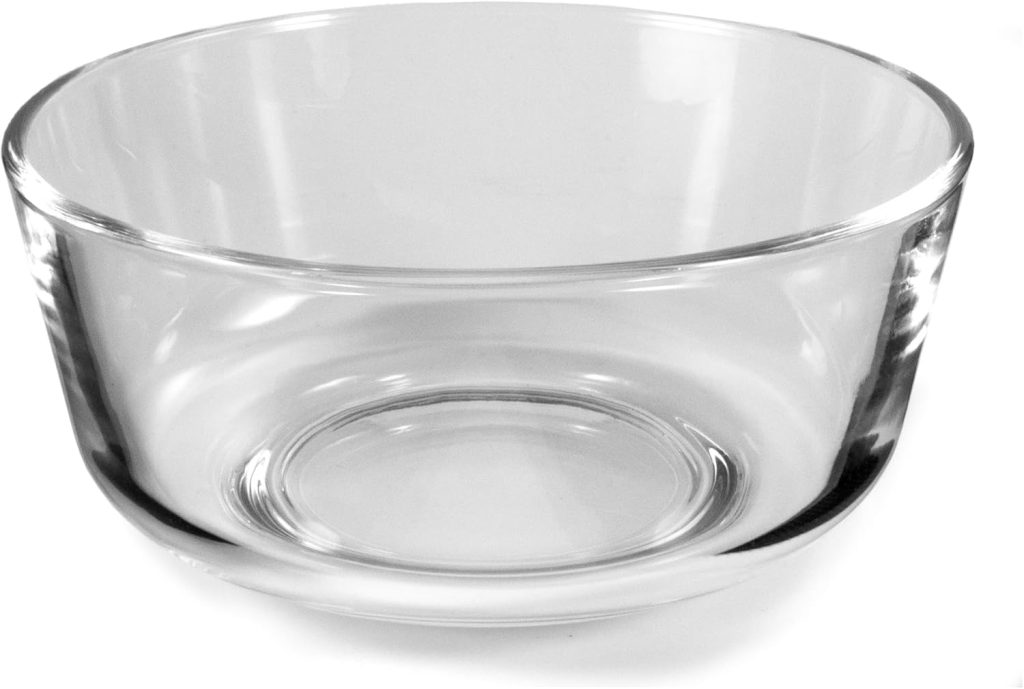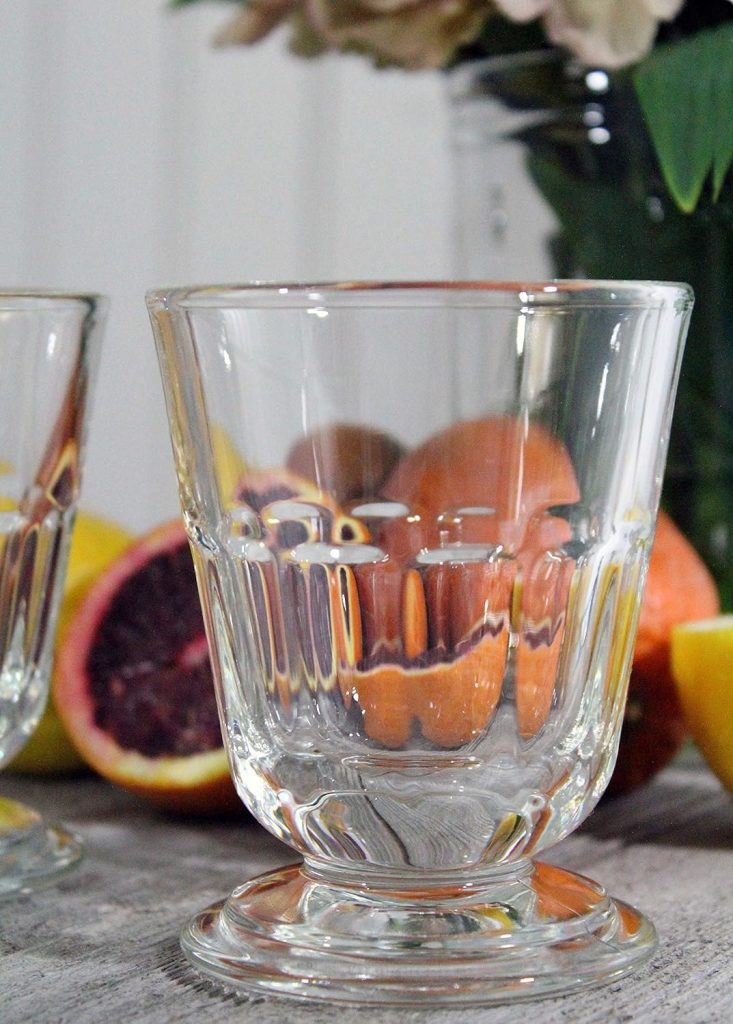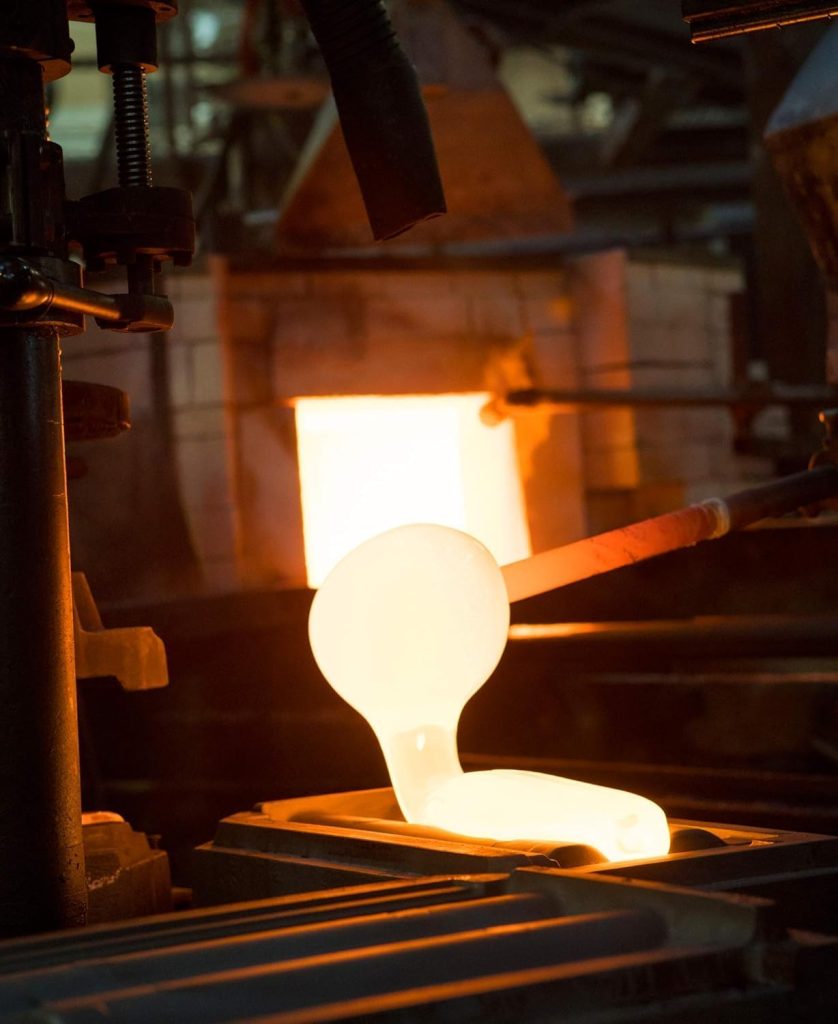You’re reaching for your favourite glass baking dish, and it suddenly shatters in your hands, sending sharp fragments across your kitchen counter.
If you’ve ever wondered whether the glassware in your kitchen is truly safe for your family, you’re not alone.
Many safety-conscious home cooks struggle to understand the difference between various glass types and which ones offer the best protection for their loved ones.
When it comes to choosing safe, non-toxic kitchenware, understanding the fundamental differences between soda lime glass and tempered glass can make all the difference in creating a lead-free, BPA-free kitchen environment.
This comprehensive guide will help you make informed decisions about glass cookware and dinnerware that prioritize your family’s safety without compromising on functionality.
What Is Soda Lime Glass?
Soda lime glass represents the most common type of glass found in everyday kitchen items, from drinking glasses to basic storage containers.

This traditional glass composition consists of approximately 70% silica (sand), 15% sodium carbonate (soda ash), and 10% lime (calcium oxide), with the remaining 5% made up of various additives that enhance specific properties.
Chemical Composition and Safety Profile
The beauty of soda lime glass lies in its simple, time-tested formula that has been used for centuries.
Unlike some modern materials that may contain questionable additives, soda lime glass maintains a clean chemical profile that aligns perfectly with lead-free and BPA-free kitchen safety standards.
The primary ingredients—silica, soda, and lime—are naturally occurring substances that don’t leach harmful chemicals into food or beverages.

This glass type excels in everyday kitchen applications because it’s non-reactive with acidic foods like tomatoes, citrus fruits, or vinegar-based dressings.
You can confidently store leftovers, serve meals, or prepare ingredients without worrying about chemical contamination affecting your family’s health.
Manufacturing Process and Quality Control

The production of soda lime glass involves melting the raw materials at approximately 1,700°F (927°C), creating a molten mixture that can be shaped into various kitchen items.
Modern manufacturing processes ensure consistent quality and eliminate potential contaminants that could compromise food safety.
This controlled environment helps maintain the integrity of the glass structure while preserving its non-toxic properties.
Understanding Tempered Glass Technology
Tempered glass takes safety to the next level through an advanced heat treatment process that dramatically alters the glass’s physical properties.

Also known as toughened glass, this material undergoes rapid heating to about 1,200°F (649°C) followed by controlled cooling, creating internal stresses that make it approximately four times stronger than regular soda lime glass.
The Science Behind Tempered Glass Strength
The tempering process creates a unique stress pattern within the glass structure.
The outer surfaces cool rapidly and contract, while the interior remains hot and continues to expand.
This creates compressive stress on the surface and tensile stress in the center, resulting in a glass that can withstand significant impact and thermal shock.

When tempered glass does eventually break, it shatters into small, relatively harmless cubes rather than dangerous, sharp shards.
This safety feature makes it particularly valuable in kitchen environments where accidents can happen, especially in households with children or elderly family members.
Applications in Kitchen Safety
Tempered glass shines in high-stress kitchen applications.
Oven doors, cooktop surfaces, and high-heat baking dishes often utilize tempered glass because it can handle rapid temperature changes without cracking ( caution is needed here), but not like Borosilicate glass.
This thermal resistance makes it an excellent choice for busy kitchens where hot dishes need to be moved quickly or where extreme temperature variations are common.
Durability Comparison: Strength Under Pressure

When evaluating glass options for your kitchen, durability plays a crucial role in both safety and long-term value.
The strength differences between soda lime glass and tempered glass become particularly important when considering how each material responds to daily kitchen stresses.
Impact Resistance and Drop Testing
Tempered glass clearly wins in impact resistance, offering approximately four to five times the strength of standard soda lime glass.
In practical terms, this means your tempered glass baking dishes can better survive accidental drops onto hard kitchen floors, while soda lime glass items require more careful handling.
However, this doesn’t mean soda lime glass is fragile or unsuitable for kitchen use.
When properly manufactured and handled with reasonable care, soda lime glass provides excellent durability for most kitchen tasks.
The key is understanding which applications benefit most from each material’s specific strengths.
Thermal Shock Resistance
Both glass types handle temperature changes well, but tempered glass excels in extreme conditions.
While soda lime glass can safely transition from room temperature to moderate oven heat, tempered glass can handle dramatic temperature swings without stress fractures.
This makes tempered glass ideal for dishes that go directly from freezer to oven (but with care) or for serving pieces that hold both hot and cold foods.
For families who frequently use glass cookware for meal prep or batch cooking, this thermal resilience translates to safer kitchen practices and longer-lasting kitchenware investments.
Safety Features: Protection for Your Family
Safety remains the top priority when selecting kitchen materials that will come into contact with your family’s food.
Both soda lime glass and tempered glass offer distinct safety advantages that support your goal of maintaining a non-toxic, family-friendly kitchen environment.
Breaking Patterns and Injury Prevention
The way glass breaks can significantly impact kitchen safety. Soda lime glass, when it does break, tends to fracture into larger, sharper pieces that pose cutting risks.
While this breakage pattern isn’t inherently dangerous when handled properly, it does require immediate and careful clean-up to prevent injuries.
Tempered glass’s characteristic “pebbling” break pattern dramatically reduces injury risk.
Instead of creating long, sharp fragments, tempered glass crumbles into small, roughly uniform pieces with relatively dull edges.
This safety feature proves invaluable in busy kitchens where quick clean-up is essential, particularly in homes with children who might encounter broken glass before adults can respond.
Chemical Safety and Food Purity
Both glass types excel in maintaining food purity and supporting your commitment to lead-free, BPA-free kitchen practices.
Neither soda lime glass nor tempered glass leaches chemicals into food, even when exposed to acidic ingredients, high temperatures, or extended storage periods.
This chemical stability makes both options superior to many plastic alternatives that may release harmful compounds under similar conditions.
The non-porous surface of both glass types also prevents bacterial growth and odour absorption, ensuring that your stored foods maintain their intended flavours and remain safe for consumption.
This characteristic supports your family’s health by eliminating hidden sources of contamination that can occur with other storage materials.
Cost Analysis: Value for Kitchen Safety Investment
Understanding the financial implications of choosing between soda lime glass and tempered glass helps you make budget-conscious decisions that don’t compromise your family’s safety.
The initial cost difference between these materials often reflects their manufacturing complexity and performance capabilities.
Initial Purchase Considerations
Soda lime glass products typically cost 20-40% less than comparable tempered glass items due to simpler manufacturing processes and lower energy requirements.
This cost advantage makes soda lime glass an attractive option for families building their initial collection of safe dinnerware or those working within tight budget constraints.
Tempered glass commands higher prices because of its specialized manufacturing process and enhanced safety features.
However, this premium often pays dividends through increased durability and reduced replacement costs over time.
For high-use items or applications where safety is paramount, the additional investment frequently proves worthwhile.
Long-term Value Assessment
When evaluating long-term value, consider both replacement frequency and safety costs.
Tempered glass items may last significantly longer in busy kitchens, potentially offsetting their higher initial cost through extended service life.
Additionally, the reduced injury risk associated with tempered glass’s safer breaking pattern can prevent medical expenses and lost time from accidents.
For most families, a strategic combination of both glass types provides optimal value: tempered glass for high-stress applications like baking dishes and cooktop items, with soda lime glass serving well for drinking glasses, serving pieces, and storage containers that experience gentler use.
Kitchen Applications: Choosing the Right Glass for Each Use
Selecting appropriate glass types for specific kitchen applications maximizes both safety and functionality while supporting your commitment to maintaining a non-toxic dining and cooking environment.
Understanding how each glass type performs in various scenarios helps you make informed purchasing decisions.
Cookware and Baking Applications
For oven-to-table baking dishes, casserole pans, and roasting containers, tempered glass offers superior performance and safety.
Its enhanced thermal shock resistance handles the temperature extremes common in baking and roasting, while its improved impact resistance survives the inevitable bumps and drops that occur during food preparation and serving.
When considering items like pie plates, loaf pans, or large serving dishes that will see frequent use and handling, the safety advantages of tempered glass often justify the additional cost.
These pieces form the backbone of safe cooking practices and benefit from maximum durability.
Storage and Serving Solutions
Soda lime glass excels in storage containers, drinking glasses, and decorative serving pieces where extreme temperature changes are less common.
These applications don’t require the enhanced strength of tempered glass, making the cost-effective nature of soda lime glass more appealing.
Storage containers made from soda lime glass provide excellent food preservation while maintaining the chemical purity that supports your lead-free, BPA-free kitchen goals.
Their transparency allows easy identification of stored items, and their non-reactive surface preserves food quality without affecting taste or nutritional value.
Making the Right Choice for Your Family
Choosing between soda lime glass and tempered glass ultimately depends on your specific kitchen needs, safety priorities, and budget considerations.
Both options support your commitment to maintaining a safe, non-toxic kitchen environment while offering distinct advantages for different applications.
For families prioritizing maximum safety and durability, especially those with young children or high-activity kitchens, tempered glass provides enhanced protection and peace of mind.
The superior strength and safer breaking pattern justify the additional investment for frequently used items and high-risk applications.
Budget-conscious families can achieve excellent safety results by strategically combining both glass types: investing in tempered glass for critical, high-use items while utilizing cost-effective soda lime glass for gentler applications.
This approach maximizes safety benefits while maintaining financial flexibility.
Both glass types support your goals of creating a lead-free, BPA-free kitchen environment that protects your family’s health.
When comparing these options to alternatives like plastic or questionable composite materials, both soda lime glass and tempered glass represent superior choices for conscious families committed to kitchen safety.
Remember that proper care and handling remain essential regardless of which glass type you choose.
Both materials will serve your family well when used appropriately and maintained according to manufacturer recommendations.
For more detailed comparisons of glass types in kitchen applications, explore our guides on borosilicate glass vs tempered glass and normal glass vs borosilicate glass to further enhance your understanding of safe kitchenware choices.